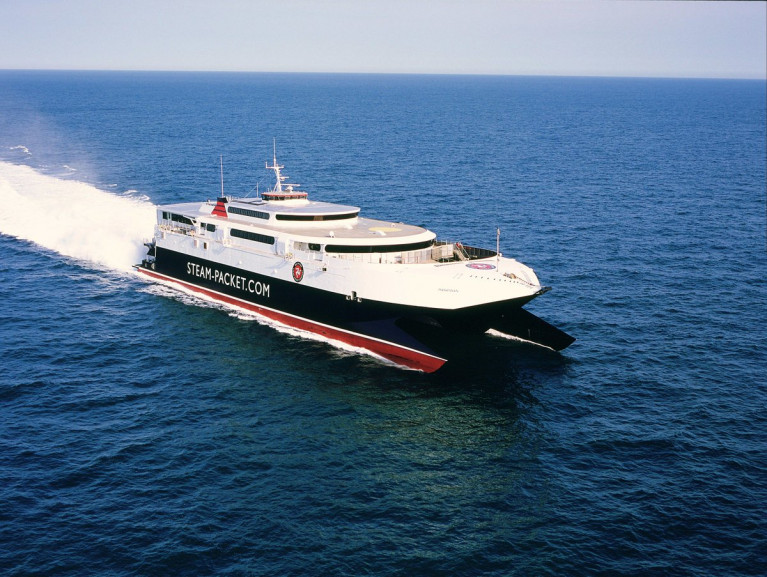Manannan the fast-ferry catamaran of the Isle of Man Steam Packet, called to Dublin Port for the first time this year, but firstly to undergo an examination of the 96m craft prior to entering service, writes Jehan Ashmore.
The 43-knot fast-ferry built in 1998 by InCAT of Hobart, Tasmania and acquired by the IOMSP in 2009, Afloat had tracked to Dublin Port having on Monday made a morning passage from Douglas Harbour.
The arrival of 865 passenger/200 vehicle Mananan did not involve berthing at Dublin Port's busy main Ferry Terminal No. 1 but upriver to Alexandra Basin and alongside Ocean Pier.
Manannan was boarded by officials of the Irish Maritime Administration (part of the Dept of Transport) to enable an inspection of the craft.
Among the roles of the IMA (equivalent of the UK's Maritime & Coastguard Agency) is to facilitate international safety levels and by enhancing infrastructure needed to secure employment in the shipping, fishing and leisure sectors.
Commenting to Afloat, a spokesperson of the IOM Steam-Packet said the reason for the call by Manannan was to asses the fitness of the fast-ferry to operate to and from Ireland. The examination by the IMA of the Manx-flagged fast-ferry, added the ferry spokesperson had passed with flying colours.
Yesterday, Manannan marked the resumption of the Steam-Packet's core summer route, Douglas-Liverpool by running the 2hr 45 minute crossing. This it to be followed with further connections between the Manx capital and Belfast Harbour (3hrs) on 13 April and calls to Dublin (2hrs 55mins) the next day on 14 April.
Facilities of the fastferry include standard seating areas, two cinema lounges, a large bar area at the stern and a cafe, a shop in addition to reserved and premium lounges.
Previously to this week's call to Dublin Port, Afloat had also tracked Manannan arrive in Douglas Harbour on 26 March having completed a routine annual dry-docking. This year the overhaul took place at A&P Falmouth, Cornwall.
The sailing back from the south-west of England to the Isle of Man involved a passage time taking almost 10 hours.






























































